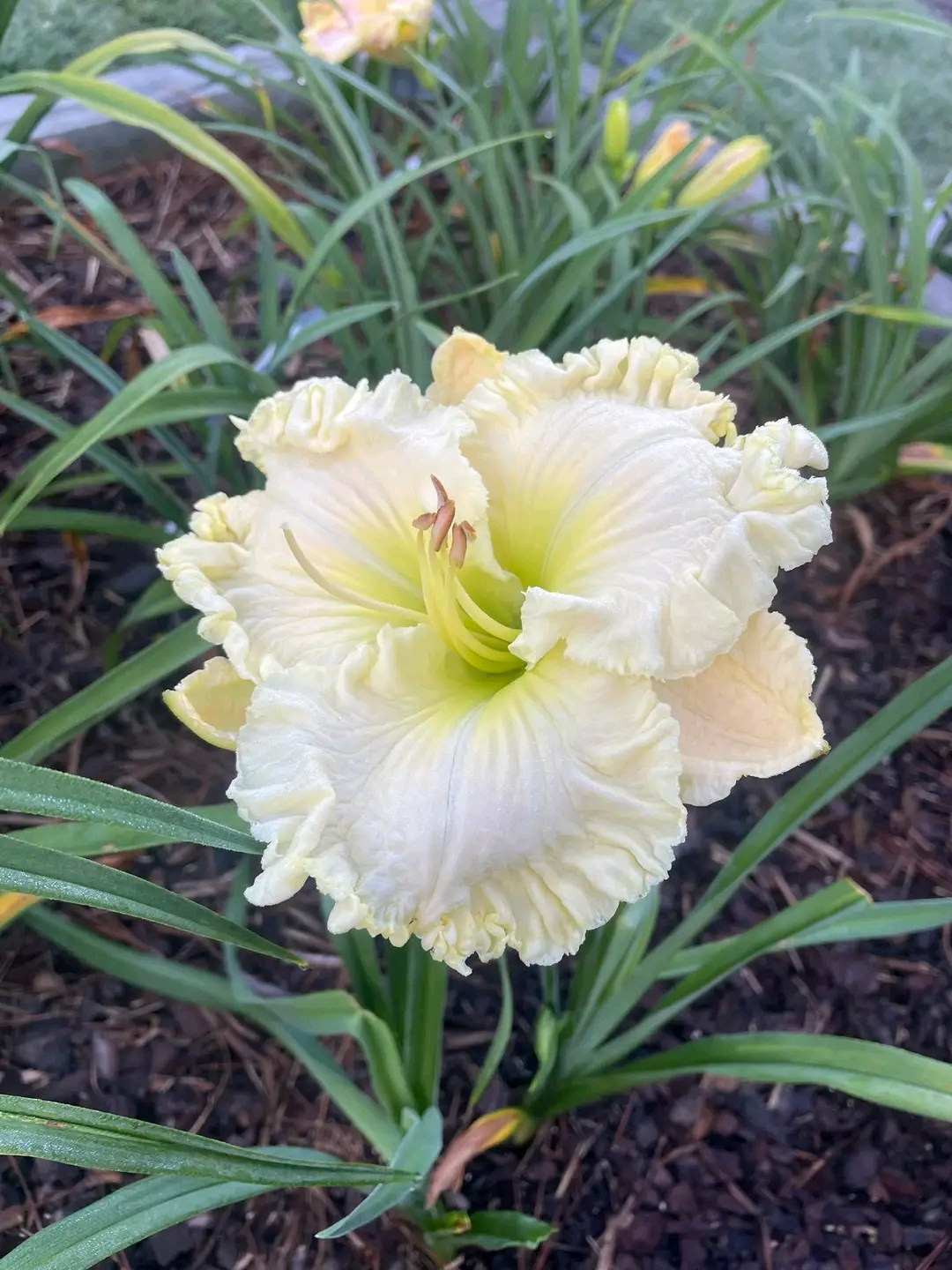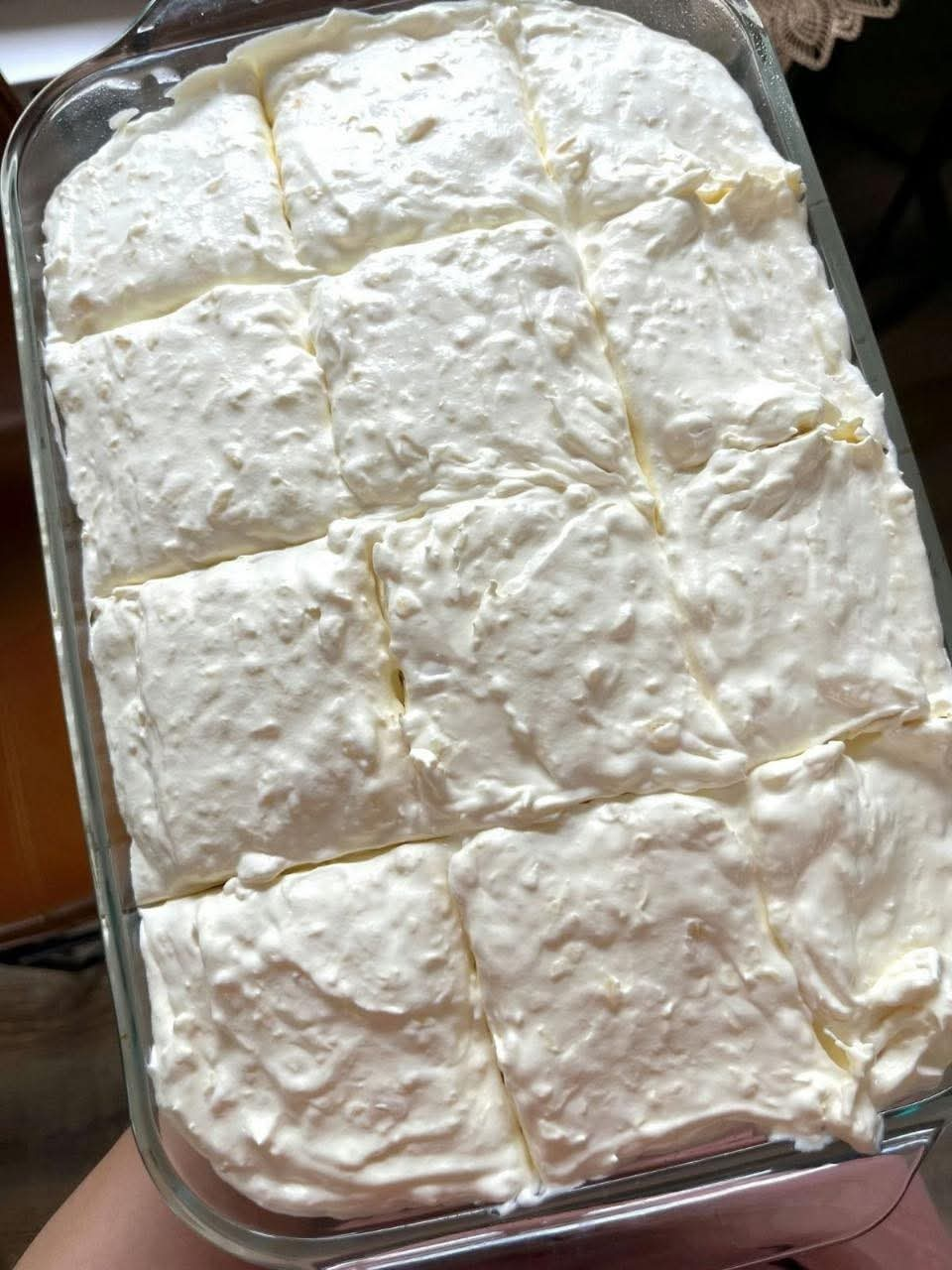Few flowers command attention quite like the daylily (Hemerocallis), and among its many colors, the soft elegance of cream varieties is especially captivating. Their pale petals, often brushed with hints of yellow or peach near the throat, bring a gentle light to garden beds, borders, and walkways. This particular bloom — with its ruffled edges and buttery undertones — embodies everything daylilies are celebrated for: beauty, resilience, and versatility.
In this comprehensive guide, we’ll explore the history of daylilies, planting techniques, care tips, design inspiration, and why cream-colored varieties are worth making the centerpiece of your landscape.
🌿 A Brief History of Daylilies
Daylilies are not true lilies but belong to the genus Hemerocallis, which means “beauty for a day” in Greek — a reference to the fact that each flower blooms for only one day. This short-lived display, however, is balanced by the plant’s ability to produce multiple buds per stem and bloom in succession over several weeks.
Originally native to Asia, particularly China, Korea, and Japan, daylilies have been cultivated for thousands of years. Early varieties were prized not only for their ornamental appeal but also for culinary and medicinal uses in China. In the 20th century, hybridization efforts exploded, creating thousands of cultivars with new colors, patterns, and forms.
Today, gardeners have over 80,000 registered daylily cultivars to choose from, ranging from fiery reds to pastel pinks — but cream-colored varieties hold a special charm. They blend effortlessly with any color scheme and add an air of sophistication without overpowering other plants.
🌞 Choosing the Perfect Spot
Daylilies are famously adaptable, but they have preferences that will make them thrive:
Light: Full sun (at least 6 hours daily) is ideal, especially for maximum flowering. In hotter climates, some afternoon shade can help protect delicate blooms.
Soil: Well-draining soil enriched with organic matter works best. Daylilies tolerate various soil types but will sulk in areas with standing water.
Spacing: Space plants 18–24 inches apart to allow room for clump growth and good air circulation.
🌱 Planting Daylilies
When to Plant
Spring: Once the soil is workable and danger of frost has passed.
Fall: 4–6 weeks before the ground freezes, giving roots time to establish before winter.
How to Plant
Prepare the soil: Loosen it to a depth of 12 inches and mix in compost.
Dig a hole: Large enough to spread the roots without bending them.
Position the plant: Place the crown (where leaves meet roots) about 1 inch below the soil surface.
Backfill & water: Firm soil gently around roots and water thoroughly.
Mulch: Apply 2–3 inches to conserve moisture and prevent weeds.
💧 Watering and Feeding
Watering: Daylilies are drought-tolerant once established, but consistent watering during bloom season improves performance. Aim for 1 inch of water weekly.
Fertilizing: Feed in early spring and after the first bloom cycle with a balanced, slow-release fertilizer (10-10-10). Avoid excessive nitrogen, which promotes leaf growth over flowers.
✂️ Maintenance
Deadheading
Remove spent blooms daily to keep the plant looking tidy and encourage more flowering.
Dividing Clumps
Every 3–5 years, divide overcrowded clumps in early spring or late summer to maintain vigor.
Pest & Disease Control
Daylilies are generally trouble-free but may encounter:
Aphids or thrips: Wash off with water or use insecticidal soap.
Daylily rust: Remove affected foliage and avoid overhead watering.
🌼 Why Choose Cream-Colored Varieties?
Timeless elegance: Cream tones soften bold garden palettes and create a romantic atmosphere.
Versatility: They pair beautifully with almost any flower color — from deep purples to bright oranges.
Evening glow: Light-colored blooms seem to glow at dusk, adding magic to evening gardens.
🌟 Popular Cream-Colored Daylily Cultivars
‘Joan Senior’ — A classic with pristine ivory petals and a pale green throat.
‘Sunday Gloves’ — Creamy white petals with a faint yellow blush; fragrant.
‘Lacy Doily’ — Cream petals with delicate ruffled edges and a soft yellow center.
‘Catherine Woodbury’ — Soft cream with a blush of lavender for a romantic twist.
🏡 Design Ideas
Cottage Gardens
Pair cream daylilies with lavender, delphiniums, and foxgloves for a soft, nostalgic palette.
Tropical Flair
Surround them with bold foliage plants like cannas or elephant ears for contrast.
Moon Gardens
Combine cream daylilies with white phlox, shasta daisies, and lamb’s ear for a nighttime-friendly garden that glows under the moonlight.
Formal Borders
Use cream varieties along pathways, alternating with purple salvias or boxwood hedges for symmetry and elegance.
❄️ Winter Care
In colder zones, daylilies die back to the ground after frost. Cut foliage to about 4–6 inches in late fall and mulch lightly to protect crowns. In warmer climates, simply remove dead leaves to tidy up the plant.
🌺 Fun Facts About Daylilies
Each flower lasts only one day, but mature plants can produce hundreds of blooms in a season.
Some daylilies are fragrant, making them doubly appealing in gardens.
In China, the flower is associated with motherhood and is a common gift for expectant mothers.
The buds and petals of certain varieties are edible and used in Asian cooking.
📋 Quick Care Summary
| Task | Frequency | Tip |
|---|---|---|
| Watering | Weekly | More often in drought |
| Fertilizing | Twice per season | Balanced slow-release |
| Deadheading | Daily during bloom | Keeps plants neat |
| Dividing | Every 3–5 years | Restores vigor |
🌸 Final Thoughts
Cream-colored daylilies are more than just pretty flowers — they are enduring, low-maintenance perennials that bring understated beauty to the garden year after year. Whether you’re planting them as a focal point, mixing them into a colorful bed, or using them in moonlight gardens, their luminous petals and hardy nature will reward you with consistent, breathtaking displays.
Their charm lies not only in their color but also in their resilience. These are plants that forgive neglect, survive in less-than-perfect soil, and still manage to look spectacular. Once you add cream daylilies to your garden, you may find yourself seeking out even more varieties — each with its own subtle twist on elegance.
More Articles You Might Like
-
Texas Toast Sloppy Joes: The Crunchy, Cheesy Upgrade You Didn’t Know You Needed
There’s something timeless about sloppy joes. For generations, this saucy, savory, and slightly sweet ground beef sandwich has been a go-to comfort food in American kitchens. It’s quick, filling, and family-friendly—perfect for busy weeknights. But what if we told you there’s a way to take this classic dish up a notch? Enter the Texas Toast…
-
Classic Pig Pickin’ Cake
When it comes to Southern desserts, few sweets shine as brightly as the Classic Pig Pickin’ Cake. This nostalgic cake, sometimes called a “Mandarin Orange Cake,” has roots deep in Southern tradition. It gets its playful name from its frequent appearance at pig pickin’s—Southern-style barbecue gatherings where communities come together to enjoy slow-cooked pork, sides,…
-
Lemon Garlic Butter Chicken with Creamy Parmesan Pasta
There’s something irresistible about the combination of tender, golden-browned chicken paired with a creamy pasta coated in Parmesan cheese. Add the brightness of lemon, the depth of garlic, and the richness of butter, and you have a recipe that feels indulgent yet approachable enough for a weeknight dinner. Lemon Garlic Butter Chicken with Creamy Parmesan…



